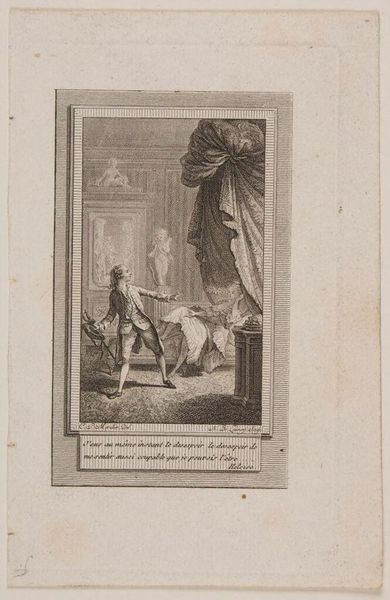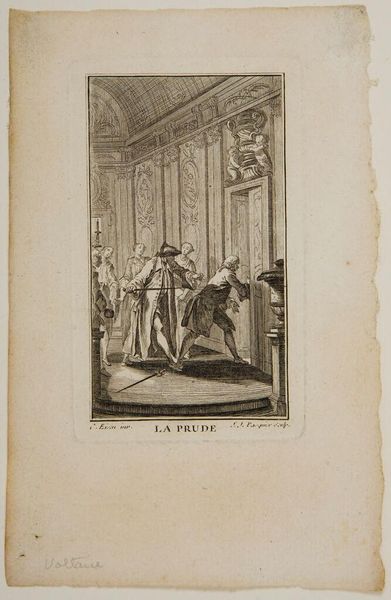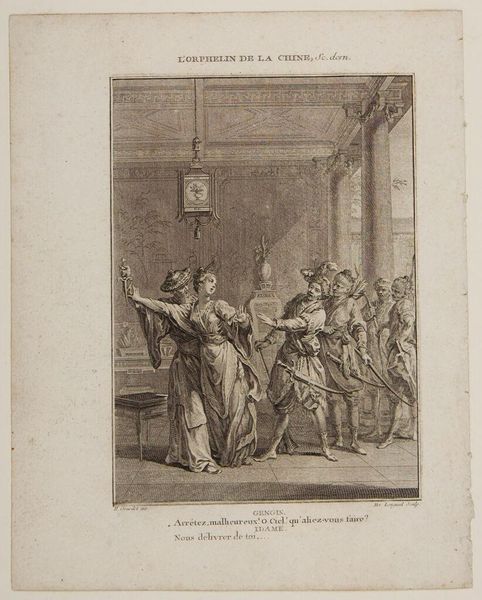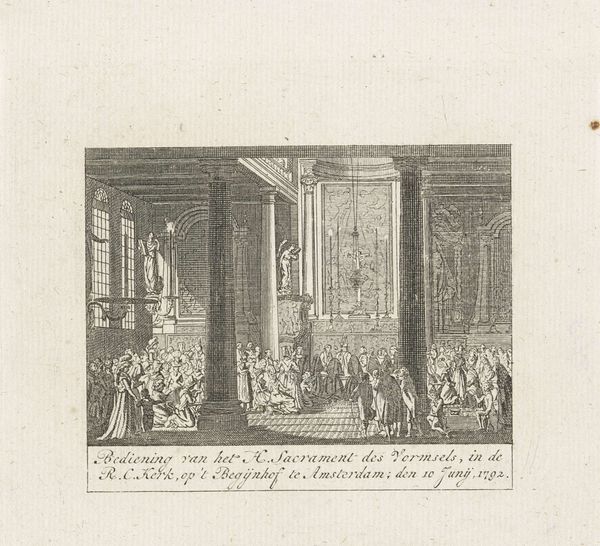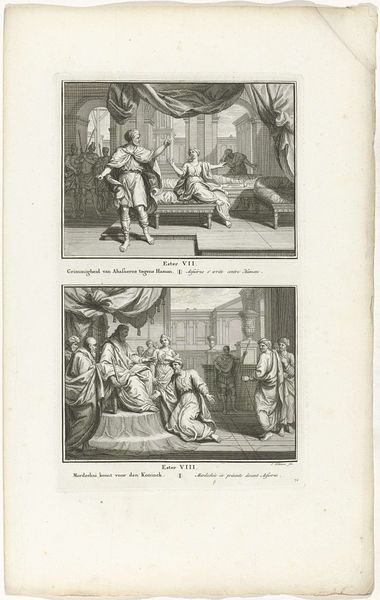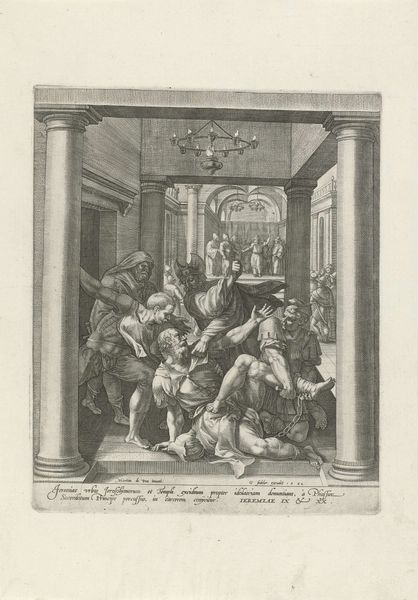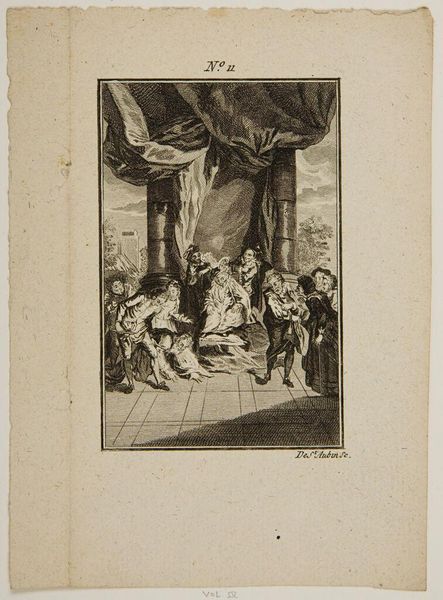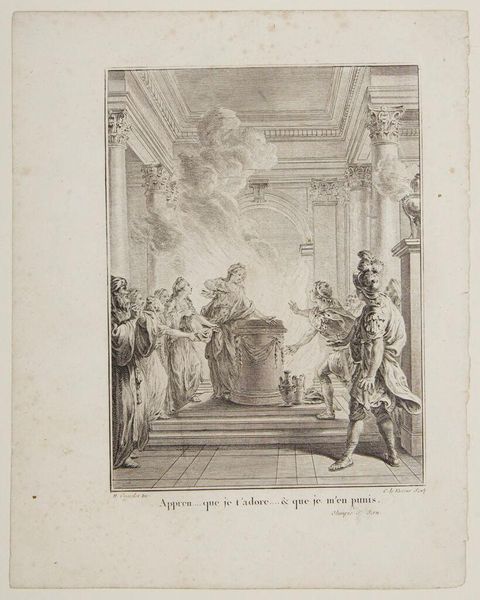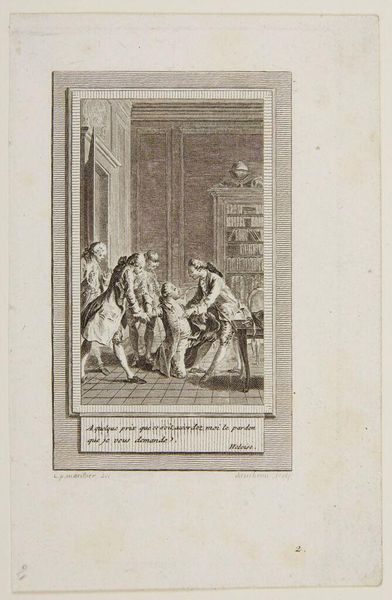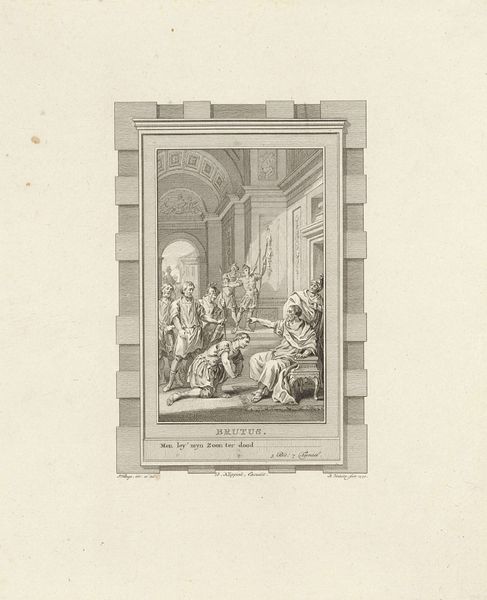
Dimensions: Image: 10.5 Ã 5.8 cm (4 1/8 Ã 2 5/16 in.) Plate: 14 Ã 9.5 cm (5 1/2 Ã 3 3/4 in.) Sheet: 18.2 Ã 10.2 cm (7 3/16 Ã 4 in.)
Copyright: CC0 1.0
Editor: This is Nicolas-Dauphin de Beauvais' "The Prodigal Son," an etching on laid paper. The detail is quite striking, especially given its size. How do you interpret this work through a material lens? Curator: Let's consider the etching process itself. The labor, the skilled hand meticulously scoring the metal plate, the controlled application of acid... This isn't just about depicting a biblical scene, it's about the *means* of disseminating it to a wider, perhaps less affluent, audience than a painted canvas would reach. Editor: So, the *how* it was made is as important as the *what*? Curator: Precisely. The materiality speaks to accessibility and the social function of art in that era. Think about who had access to create and own such a print and how it might have circulated. Editor: I never considered the social impact of printmaking like that before. Thanks! Curator: It's crucial to look beyond the surface and consider the labor and social implications embedded within the art object itself.
Comments
No comments
Be the first to comment and join the conversation on the ultimate creative platform.
